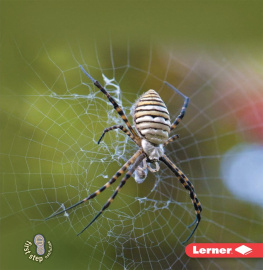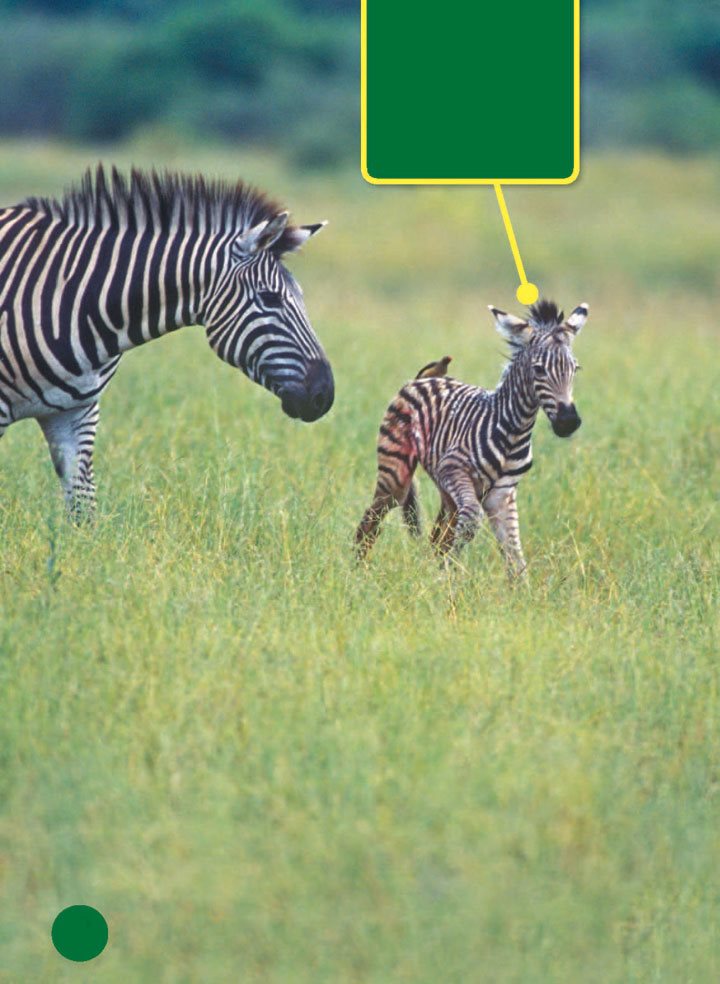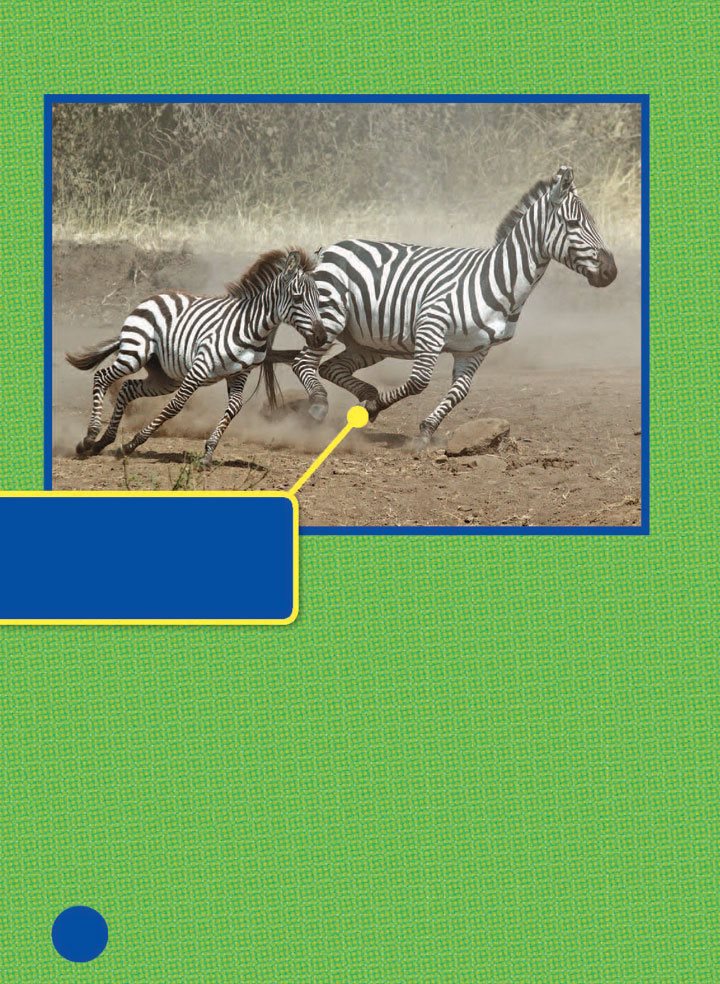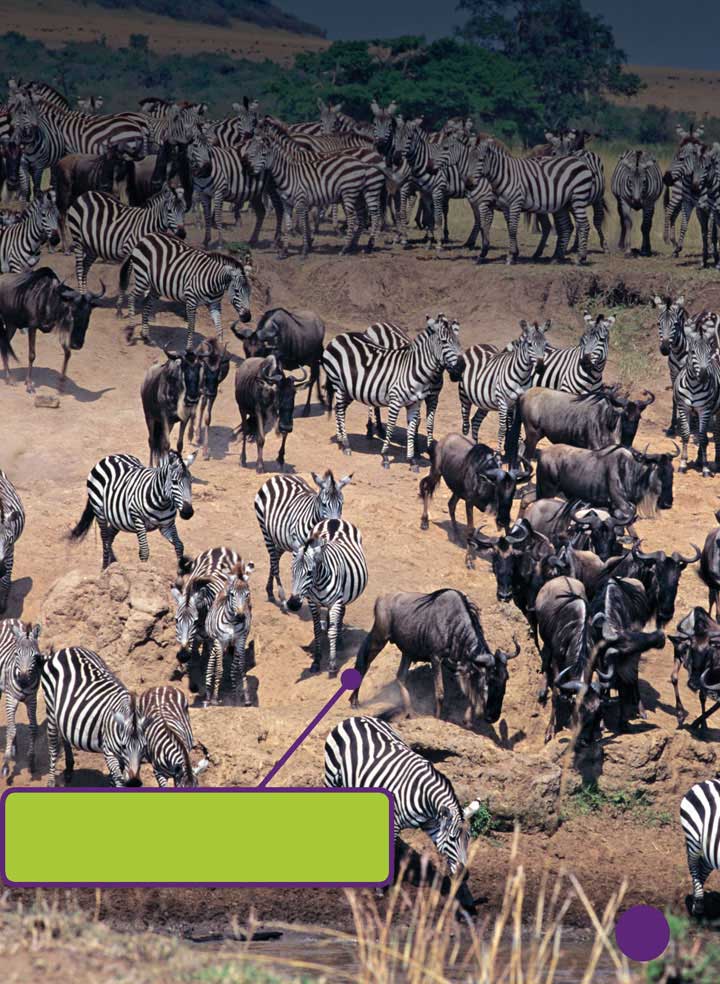Meet a
Baby
Zebra
Lisa Owings
Copyright 2016 by Lerner Publishing Group, Inc.
Content Consultant: Dr. Mark C. Andersen, Department of Fish Wildlife and Conservation Ecology,
New Mexico State University
All rights reserved. International copyright secured. No part of this book may be reproduced,
stored in a retrieval system, or transmitted in any form or by any meanselectronic, mechanical,
photocopying, recording, or otherwisewithout the prior written permission of Lerner Publishing
Group, Inc., except for the inclusion of brief quotations in an acknowledged review.
Lerner Publications Company
A division of Lerner Publishing Group, Inc.
241 First Avenue North
Minneapolis, MN 55401 USA
For reading levels and more information, look up this title at www.lernerbooks.com.
Library of Congress Cataloging-in-Publication Data
Owings, Lisa.
Meet a baby zebra / Lisa Owings.
pages cm. (Lightning bolt books. Baby African animals)
Includes index.
ISBN 978-1-4677-8114-5 (lb : alk. paper) ISBN 978-1-4677-8371-2 (pb : alk. paper)
ISBN 978-1-4677-8372-9 (eb pdf)
1. ZebrasInfancyJuvenile literature. I. Title.
QL737.U62O95 2015
599.665'71392dc23
2014044200
Manufactured in the United States of America
1 BP 7/15/15
Table of Contents
Where the Grass
Is Greener
Born to
Run
Did you see that blurry bundle of
stripes? Baby zebras are on the
move soon after birth. They have
to keep up with their family group.
One male zebra protects many
mothers and young.
A herd of zebras
runs across the
African plains.
Azebragrowsinitsmother'sbellyforaboutoneyear.Thensheisreadytogivebirth.
A mother zebra
gives birth alone.
Foals can walk
and run within
one hour of
being born.
Zebra foals are born feetfirst.
They flop onto the ground.
Their mother licks them clean.
Foals try to stand right away.
They take their first steps on
wobbly legs.
Newborn zebras weigh around
pounds (32 kilograms).
That is about as much as
a large dog. Adult zebras
can weigh as much as
four refrigerators, or up to
pounds (385 kg)!
Baby zebras grow
very quickly.
Zebra foals have fuzzier coats
than their parents. Each zebra
has its own stripe pattern.
Can you tell them apart?
Foals stripes
are often brown
instead of black.
Mothersandnewbornzebrastaketimetobond.Thentheyreturntothegroup.
Alone time is
important for
a mother and
her foal.
Life
on
the
Plains
Baby zebras have to learn
quickly to survive in the wild.
They mainly learn from
their mothers.
Male zebras stay
busy watching
over the group.
Foalsnursewhentheygethungry.Theirmothersteachthemwhichgrassestoeat.
Zebra foals follow
their mothers as
they graze.
Zebra foals
can gain up
to pound
(0.5 kg) each
day! That is as
much as four
sticks of butter.
Baby zebras soon grow
into their long legs.
Other hungry animals roam the
plains too. Foals must learn to
avoid hyenas and lions. Foals
also must stay away from
leopards and cheetahs.
Lions are one predator
zebras must try to escape.
Zebras can run
fast when they
need to.
Zebras form circles around
the young to protect them.
The adults kick and bite to
fight off predators.
Mothers groom their babies
to keep them clean.
Grooming also helps them bond.
At night, baby zebras sleep while
parents stand watch.
Zebra mothers teach foals
how to groom one another.
Where
the
Grass
Is
Greener
Baby zebras drink only their
mothers milk for the first week.
Then they begin eating grasses
and other plants. But foals still
drink milk from their mothers too.
Foals stop nursing
between seven and
eleven months.
When foals grow
older and stop
nursing, they must
get all of their
nutrients from
plants. It isnt
always easy.
Zebras eat mainly
dry grasses and
bushes.
Some zebras stay
in one place to
graze and rest.
Some young zebras live in areas
with plenty of food year- round.
But others live in areas where
there is only enough food for
part of the year. They must
migrate during the dry season.



































